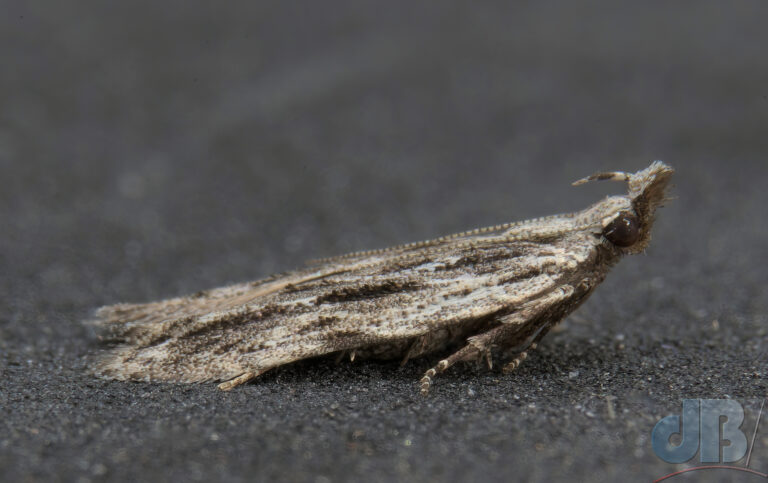The rate at which I’m seeing new moth species in the garden has been somewhat slow this year. Obviously, in my first couple of years mothing, I saw dozens and dozens I’d never seen before. In fact, most of the moths I saw early on were all new to me. I think the garden list got to about 350 species after the first three years. In subsequent, years, I’d see double figures of new moths, at least 127 NFM in 2018, 125+ NFM in 2019, and so on. 2022 was a good year, 64 NFM with the last new one of the year being at the end of October, December Moth!

So far in 2023, I’ve seen 22 new species.
Interestingly, as I fill in my records and add photos of the moths to my galleries on Imaging Storm, I also note as part of the scientific name, the scientists who gave the species its official name. Most of these were done in the 18th and 19th centuries by Linnaeus, Hufnagel, Denis & Schiffermüller, Scopoli, Forster, and others. But, a new moth for me this morning was Anarsia innoxiella. This tiny micro moth was new to science in 2017, according to the UK Moths site. The species is, the site says, well-established but only in local spots in Southern England.
According to the site, “it is thought that most specimens of previously identified A. lineatella that have been light-trapped are likely to be innoxiella.” The site adds, “The long black streak in the centre of the forewing is said to be diagnostic of innoxiella, supported by the more contrasting pattern overall. A. lineatella has a less-contrasting, duller pattern and the central black streak is shorter and more elliptical.”